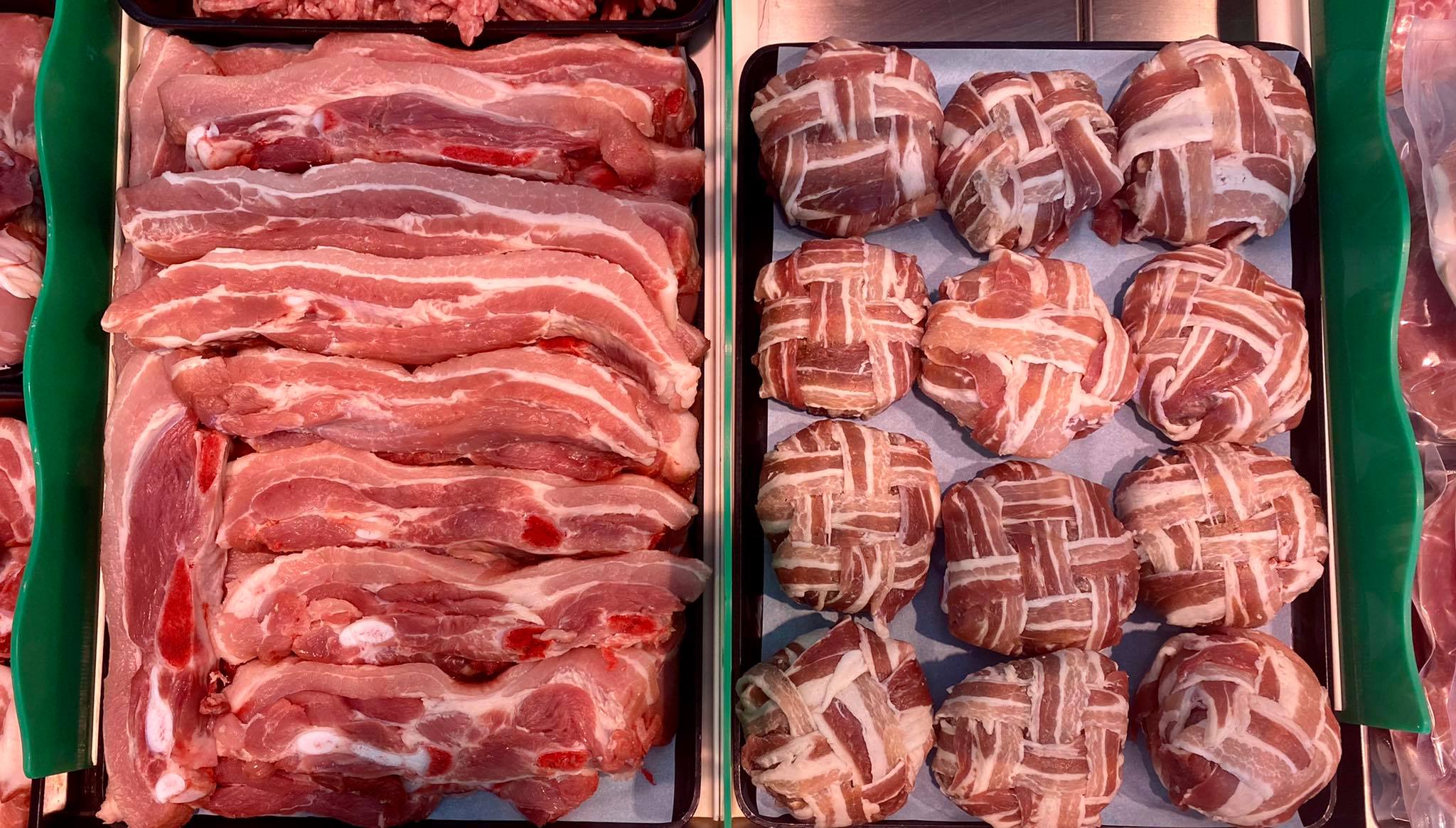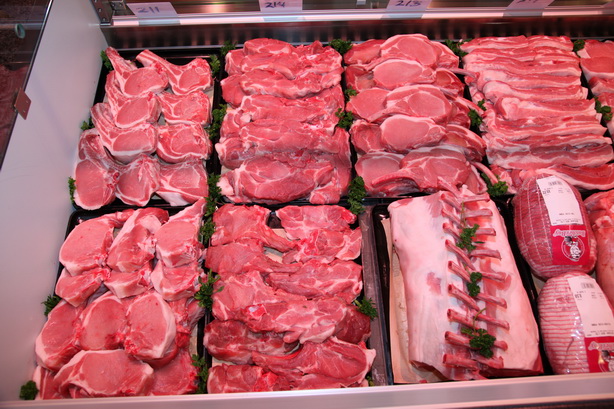Pork
Our selection of Pork cuts


- Pork Cutlets
- Pork chops
- Boneless pork chops
- Pork fillet
- Belly pork strips
- Shoulder Pulled Pork
- Rind on Pork loin roast
- Rind on Pork Leg Roast
NUTRIENT-RICH PORK: PART OF HEALTHY EATING PATTERNS
In the market place today, lean, nutrient-rich pork is versatile, affordable and accessible. Pork has many beneficial qualities to make pork easy to incorporate into any healthy andbalanced diet.Source of Key Nutrients: Pork is both a good source of protein and also provides several important vitamins and minerals. A 3-ounce serving of pork is an “excellent” source of thiamin, selenium, protein, niacin, vitamin B6 and phosphorus, and a “good” source of riboflavin, zinc, and potassium.[1]
Lean Protein: Today’s pork is 16% leaner and 27% lower in saturated fat compared to20 years ago.[2] Seven cuts of pork meet the USDA guidelines for “lean” by containing less than 10 grams of fat, 4.5 grams of saturated fat and 95 milligrams of cholesterol per 100 grams of meat.[3] Popular pork tenderloin has the same amount of fat as a skinless chicken breast.
Heart-Healthy: Pork is naturally low in sodium and a “good” source of potassium – two nutrients that, when coupled, can help regulate blood pressure. Pork tenderloin is certified as heart-healthy by the American Heart Association with its heart-check mark, indicating that it contains less than 6.5 grams of fat, 1 gram or less of saturated fat (and 15% or less calories from saturated fat) and 480 milligrams or less of sodium per label serving, among other criteria.
[1] National Nutrient Database for Standard Reference, Release 27. Based on 3-ounce cooked servings (roasted), separable lean only.
[2] National Nutrient Database for Standard Reference, Release 27. Based on 3-ounce cooked servings (roasted or broiled), visible fat trimmed after cooking.
[3] National Nutrient Database for Standard Reference, Release 27.
